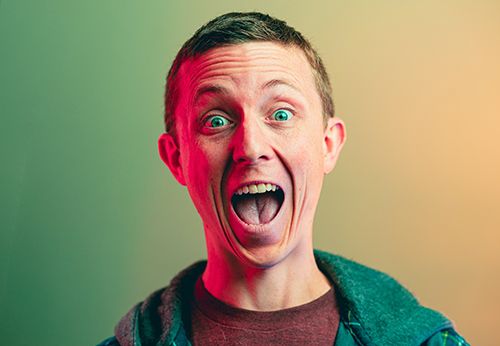Another background trend that’s evolving is the use of illustrations. While designers have used illustrations in the background for quite some time, these illustrations are more elaborate with layered scenes and even some animation.An illustration can be attention-grabbing and memorable. The thing that’s difficult about an illustration is that these background designs can be rather busy, and you’ll have to carefully plan the placement and style of other elements.The use of the illustration in the example above is almost perfect. With an off-center placement and hints of animation, it complements the text and rest of the design well.
Color Block Layers
Color blocking has been a design trend that transcends disciplines. You’ll find it in fashion, home décor and website design.
What’s great about this style for design backgrounds is that it can be bright, and with layering, visually interesting. It works with a variety of color palettes – which can be great for brands – and doesn’t create a background that’s overly complex or difficult to achieve.Use a color-blocked layer with a bright or light background and then add a second “background” in another color. You can see this in the portfolio website example above with a white background and then individual elements in blue boxes.
Flat Color
One of the parts of flat design tat’s never really gone away are the colors of the style. These colors are coming back around as background colors.These backgrounds often have realistic layers on top and sometimes a border or another background behind them to create depth. (You can see this full effect from the example above with white edging around a beige background with an image on top.)

Geometric Shapes
Circles, polygons, and other geometric elements are a big part of background design in 2020.The shapes can be reminiscent of childhood or just a fun alternative to all the flat, single-color backgrounds that had been previously trending. For a modern flair on geometry, stick to a monotone color palette and use elements with a lot of contrast to make the most of the background.These background styles can be somewhat flashy, such as the example above, or include a muted color palette with subtle geometric undertones.
Line Patterns
From subtle curves to bold strokes, line patterns are growing in popularity as a background design element.What makes lines work is that they mean something. The best line patterns help draw the user into the design and lead the eye to other visual elements, such as the custom line pattern in the example above.Line patterns can be large or tiny, and both can be effective depending on the goals of your project.
Watercolor
Surprisingly, watercolor backgrounds tend to evoke a lot of response from designers – they either love or hate them.Many associate watercolor elements with a more feminine tone, such as the example above, but they don’t have to be. Use a neutral watercolor to add depth or balance to a background.Watercolor backgrounds can mimic elements that are painted or just include lines and swirls of “paint.”Using pale pastels, these elements include depth for the background and almost fade away at the same time.








Leave a Comment